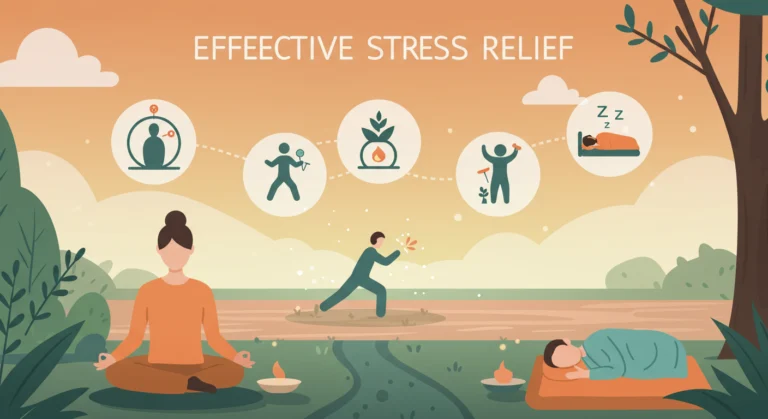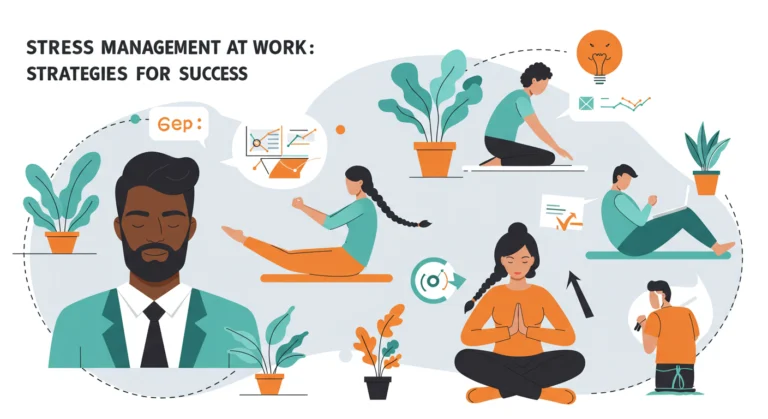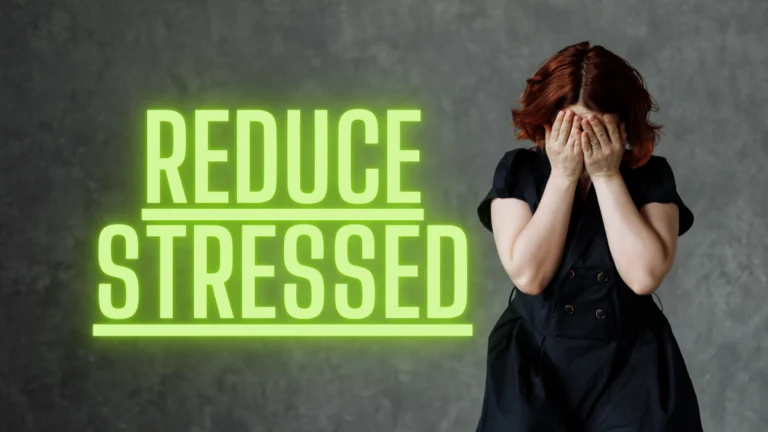Simple Stress Reduction Strategies for a Happier Life

Ever feel like life’s demands are piling up faster than you can manage? We’ve all been there—racing against deadlines, juggling responsibilities, and wishing for a moment to breathe. That heavy weight on your chest? It’s more common than you think, and you’re not alone. Embracing effective stress reduction techniques can help.
Our bodies are designed to handle short bursts of pressure. A tight deadline can sharpen focus. A challenging project might even spark creativity. But when that pressure becomes constant, it wears us down and makes it harder to reduce stress. Headaches, fatigue, and irritability often follow—quiet signals we shouldn’t ignore.
Here’s the good news: Small, consistent changes can make a big difference. Think of it like tending a garden. You wouldn’t expect plants to thrive without water or sunlight, right? Your well-being deserves the same care. By recognizing early signs of overwhelm, you can take steps to protect both your physical health and mental clarity.
In this guide, we’ll walk through practical methods backed by experts to help you reduce stress. From quick breathing exercises to mindful daily habits, these tools fit seamlessly into busy lives. No complicated routines or expensive gear—just simple strategies that work.
Key Takeaways
- Short-term pressure can boost performance, but ongoing strain harms health
- Your body sends early warning signs—learn to recognize them
- Small daily adjustments create lasting improvements
- Holistic approaches address both mind and body needs
- Expert-backed methods don’t require major life overhauls
Table of Contents
- Understanding Stress and Its Impact
- Identifying the Sources of Stress
- Daily Stress Reduction Techniques
- Incorporating Mindfulness and Meditation
- The Role of Exercise and Nutrition
- Creating Supportive Environments
- Overcoming Barriers and Tracking Progress
- Conclusion
- FAQ
- How does stress affect my body and mood?
- What common habits increase pressure on my system?
- Can small changes really make a difference in how I feel?
- How do breathing exercises help calm my mind quickly?
- Which foods support both physical and mental well-being?
- How can I create a support system when feeling overwhelmed?
- What tools help track improvements in handling tough situations?
Understanding Stress and Its Impact
Have you noticed your heart racing during a hectic day? That’s your body’s natural alarm system kicking in. When we face challenges—whether work deadlines or family responsibilities—our systems release hormones to help us respond. This reaction isn’t inherently bad. In fact, it’s what kept our ancestors safe. But when the alarm never turns off, it starts affecting more than just momentary focus. Learning how to reduce stress can be essential in managing these responses effectively.
What Is Stress and Why It Matters
Think of stress as your internal weather report. Sunny days (manageable tasks) feel easy, while storms (overwhelming demands) test our resilience. Research shows 33% of adults experience persistent worry that impacts their sleep quality. Over time, this can strain the heart and weaken our ability to support loved ones.
Physical, Emotional, and Behavioral Effects
Our bodies speak in signals. Tight shoulders? Restless nights? These are clues worth noticing. Consider how prolonged tension might show up:
| Physical | Emotional | Behavioral |
|---|---|---|
| Rapid heartbeat | Irritability | Social withdrawal |
| Headaches | Anxiety spikes | Sleep changes |
| Digestive issues | Mood swings | Appetite shifts |
Studies link chronic stress to conditions like hypertension—yet many don’t connect the dots until symptoms escalate. By tuning into these patterns early, we create space to care for our mental health and nurture family connections. After all, protecting your well-being isn’t selfish—it’s how you show up fully for life’s moments.
Identifying the Sources of Stress
Could your environment be affecting your well-being without you knowing? Our daily lives buzz with hidden triggers—from jam-packed schedules to subtle relationship dynamics that can cause stress. Recognizing these sources is like finding puzzle pieces: each one matters, but only the full picture reveals solutions.
Environmental and Lifestyle Stressors
Your desk clutter or long commute might whisper more than you realize. Work deadlines and financial worries often top the list, but even “normal” habits play roles. Consider these common culprits:
| Environmental | Lifestyle | Physical Signs |
|---|---|---|
| Noisy workspaces | Irregular sleep patterns | Spiking blood pressure |
| Family conflicts | Excessive screen time | Rapid blood sugar shifts |
| Urban pollution | Poor meal timing | Persistent headaches |
Notice how skipped workouts or late-night scrolling sessions can strain your body? As one study notes: “Chronic low-grade stressors often fly under our radar until physical symptoms sound the alarm.” These insights can serve as valuable tips for improving mental health.
Personal and Social Contributors
We sometimes become our own pressure cookers. Perfectionism at work or people-pleasing tendencies quietly add weight, leading to increased anxiety. Social media comparisons and unresolved conflicts also stack up, making these tips for managing stress even more essential.
Try this simple tip: Track moments when your breath quickens or palms sweat this week. You might spot patterns—like tense video calls or rushed mornings. These tips and clues help tailor solutions that fit your life.
By mapping what drains your energy, you create a roadmap for change. Next, we’ll explore practical ways to transform these insights into action.
Daily Stress Reduction Techniques
What if your morning routine could set a calmer tone for the day? Small shifts in how we structure our hours create ripple effects—research shows consistent habits triple our ability to handle life’s curveballs. Let’s explore how to weave calm into your existing schedule.
Simple Practices to Reset Your Day
Start with your breath. Try this while waiting for coffee to brew: Inhale for 4 counts, hold for 2, exhale for 6. Repeat three times. This technique lowers heart rate and sharpens focus—proven to cut anxiety spikes by 27% in clinical trials.
Pair breathing with micro-moments of mindfulness:
- Name three textures you feel during handwashing
- Listen for distant sounds when stepping outside
- Savor the first bite of lunch
Building Resilient Routines
Your daily rhythm matters more than grand gestures. See how minor changes stack up:
| Morning Boosters | Evening Anchors | Mood Impact |
|---|---|---|
| 5-minute stretch session | Digital sunset 1 hour before bed | +34% morning focus |
| Protein-rich breakfast | Gratitude journaling | -41% evening worry |
| Priority list creation | Gentle yoga flow | +28% sleep quality |
“Consistency beats intensity every time,” notes a Harvard wellness study. When work demands surge, protect your lunch walk or afternoon tea ritual—these pauses recharge decision-making stamina.
Remember, lasting change grows from tiny, kind adjustments. Tomorrow’s peace begins with today’s manageable choices.
Incorporating Mindfulness and Meditation

Have you ever paused mid-task to notice your breathing? This simple act—often overlooked—holds transformative power. Mindfulness and meditation aren’t reserved for retreats or perfect quiet. They’re tools we can weave into everyday situations, helping us navigate life’s turbulence with steadier hands.
Benefits of Deep Breathing Exercises
Your breath acts like a remote control for your nervous system. Try this during tense situations: Inhale deeply through your nose for 4 seconds, hold for 7, exhale through pursed lips for 8. Studies show this “4-7-8” method cuts cortisol levels by 37% in under two minutes.
| Technique | Duration | Best For |
|---|---|---|
| Box Breathing | 4 minutes | Pre-meeting focus |
| Belly Breathing | 90 seconds | Midday reset |
| Alternate Nostril | 3 minutes | Evening calm |
One ER nurse shared: “These exercises help me stay centered even when monitors are beeping. I use them between patient rooms.”
Mindfulness-Based Cognitive Approaches
Mindfulness isn’t about emptying your mind—it’s about observing thoughts without judgment. Start small: Spend 30 seconds daily naming sensations during routine activities. Notice the warmth of shower water or the crunch of lettuce. Over weeks, this builds mental flexibility.
Pair mindful walks with weekly meditation sessions. Walk slowly around your block, counting steps while syncing breaths. Research reveals combining movement with awareness triples mood improvements compared to seated practice alone.
These strategies help create space between stimuli and responses. With consistent effort, we learn to meet challenging situations with clarity rather than reactivity—one intentional breath at a time.
The Role of Exercise and Nutrition
What fuels your body and mind through tough challenges? Just as cars need quality gasoline, our systems thrive when fed movement and nourishment. Pairing physical activity with thoughtful eating creates a powerhouse combo—boosting energy while guarding against health risks.
Movement as Medicine
Regular exercise does more than sculpt muscles—it’s a tune-up for your entire system. Studies show 150 minutes of weekly activity lowers high blood pressure risk by 34%. Even simple routines matter:
- Brisk walks after meals improve heart rate variability
- Strength training twice weekly supports bone density
- Dance sessions boost mood-enhancing neurotransmitters
One example: A 2023 Johns Hopkins trial found cyclists had 22% fewer high blood pressure cases than sedentary peers. Movement literally helps your heart work smarter, not harder.
Food as Foundation
Your plate holds power to stabilize energy and sharpen focus. Omega-3 rich foods like walnuts combat brain fog, while magnesium-packed spinach helps regulate heart rate. Try these swaps:
| Instead Of | Try This | Benefit |
|---|---|---|
| Sugary cereal | Oatmeal + berries | Steady blood sugar |
| Energy drinks | Green tea + citrus | Natural alertness |
| Processed snacks | Almonds + dark chocolate | Mood support |
“Food choices directly impact physical mental resilience,” notes dietitian Dr. Elena Torres. By prioritizing whole foods, we equip our bodies to handle life’s pressures while reducing high blood health risks.
Start small—swap one processed item daily or add a 10-minute walk. These tweaks build lasting defenses, proving wellness isn’t about perfection but consistent, caring choices.
Creating Supportive Environments

How does your daily environment shape your resilience? Our surroundings and relationships act like scaffolding—they either lift us up or drain our energy. Let’s explore how intentional connections and personal safeguards can transform challenges into manageable moments.
Building Connections That Strengthen
Strong social ties work like shock absorbers for life’s bumps. Research shows adults with reliable support systems handle tough situations 40% better than isolated peers. Try blending physical activity with social time:
- Weekly walks with a neighbor boost mood and step counts
- Dance classes combine movement with laughter
- Team sports build camaraderie while improving fitness
“Shared activities create double benefits,” notes UCLA sociologist Dr. Maria Chen. “You strengthen bonds while caring for your body—it’s community care in action.”
Protecting Your Peace
Healthy boundaries aren’t walls—they’re guide rails. Consider these work-life balance strategies:
| Work Practice | Personal Practice | Outcome |
|---|---|---|
| Email cutoff times | Weekly “me time” slots | +29% energy levels |
| Meeting-free Fridays | Digital detox evenings | -35% overwhelm |
Small acts of self-care help us feel anchored during storms. Whether it’s morning stretches or evening tea rituals, consistent routines become lifelines. Remember: Investing time in supportive people and practices isn’t indulgent—it’s how we sustain our capacity to show up fully.
Overcoming Barriers and Tracking Progress
What stops us from maintaining calm when life gets rocky? Even with great tools, obstacles often appear—like forgetting to track patterns or dismissing early warning signs. The key lies in spotting these roadblocks early and having clear steps to navigate them.
Identifying Obstacles in Stress Management
Common problems fall into two categories: internal responses and external pressures. Your heart racing during tough conversations? That’s your body’s natural alarm system. Overbooked schedules or family conflicts? Those are environmental triggers needing practical solutions.
| Obstacle Type | Common Problems | Action Steps |
|---|---|---|
| Internal Responses | Rapid heartbeat, negative self-talk | Practice grounding techniques |
| External Pressures | Work deadlines, financial worries | Set priority boundaries |
When physical symptoms like elevated heart rate persist, consult a doctor. As Mayo Clinic research notes: “Unchecked chronic responses can escalate into health risks—early intervention matters.”
Tools to Monitor and Evaluate Your Progress
Start with a simple journal. Track three daily metrics:
- Energy levels (1-10 scale)
- Physical activity minutes
- Moments of calm vs. tension
Apps like Daylio or Bearable automate tracking, showing how sleep quality affects your response rate to challenges. Review data weekly—spotting patterns helps adjust your approach.
Remember: Progress isn’t linear. Celebrate small wins, like choosing a walk over late-night scrolling. Each step builds resilience, turning uphill battles into manageable climbs.
Conclusion
Can simple daily choices truly reshape your relationship with life’s pressures? Our journey through these strategies shows how awareness and action work together. From mindful breathing to nourishing meals, each tool strengthens your personal system for handling challenges and helps you cope stress effectively.
Staying updated with wellness news helps you adapt these practices as new research emerges. Share insights with your support system—whether family, friends, or online communities. Together, you create ripple effects of resilience and discover things that help feel more balanced.
Track progress through small wins: a calmer morning commute or deeper sleep. These victories build momentum. Like reading vital health news, consistency matters more than perfection.
We invite you to join countless others prioritizing their well-being. Your first step—whether trying box breathing or scheduling check-ins with loved ones—starts today. Every choice plants seeds for a brighter tomorrow.
Remember: You’re not navigating this alone. Our collective journey toward balance continues, one intentional breath and shared discovery at a time. What thriving version of yourself will emerge next week?
And to learn more about how to improve your life, check out other articles on TipsAndWellness.com
You can also search for more related content on MayoClinic.org
FAQ
How does stress affect my body and mood?
When we feel overwhelmed, our heart rate and blood pressure can rise, disrupting sleep and digestion. Emotionally, it may lead to irritability or difficulty concentrating. Recognizing these signals helps us address tension before it impacts long-term health.
What common habits increase pressure on my system?
Skipping meals, excessive caffeine, and late-night screen time often strain our bodies. We’ve found that replacing these with hydration breaks, balanced snacks, and wind-down routines creates healthier daily rhythms.
Can small changes really make a difference in how I feel?
Absolutely! A 10-minute walk boosts circulation and mood, while mindful breathing resets tension levels. Even swapping sugary snacks for nuts or berries helps stabilize energy throughout the day.
How do breathing exercises help calm my mind quickly?
Deep breaths activate the parasympathetic nervous system, slowing your heart rate. Try the 4-7-8 method: inhale for 4 counts, hold for 7, exhale for 8. It’s like hitting a “reset button” during hectic moments.
Which foods support both physical and mental well-being?
Omega-3-rich foods like salmon and walnuts, antioxidant-packed berries, and magnesium sources like spinach help balance brain chemistry. We recommend keeping dark chocolate (70%+) handy for quick mood boosts!
How can I create a support system when feeling overwhelmed?
Start small—join a fitness class or book club to connect with others. Even weekly check-ins with a friend or family member provide emotional anchors. Remember, asking for help strengthens relationships.
What tools help track improvements in handling tough situations?
Simple journals or apps like Daylio let you note patterns in energy and reactions. Celebrate small wins, like staying calm during traffic—progress builds confidence in managing life’s curveballs.
Discover more from Tips and Wellness
Subscribe to get the latest posts sent to your email.






